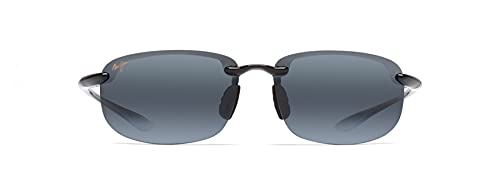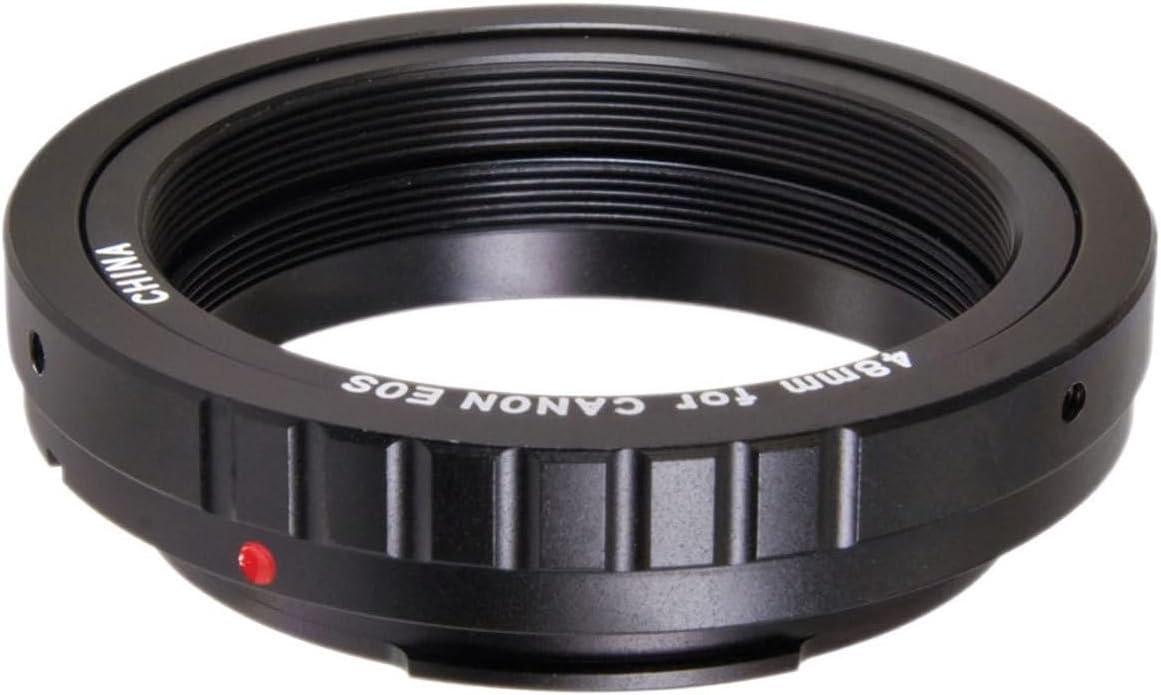
How to Choose the Right Lens Color for Rimless Sunglasses
Are you in the market for a new pair of rimless sunglasses but feeling overwhelmed by the multitude of lens color options? Don’t worry, you’re not alone. Choosing the right lens color can be a daunting task, with so many factors to consider such as style, functionality, and personal preference. That’s why we’re here to help! In this blog post, we’ll take you through the process of selecting the perfect lens color for your rimless sunglasses. Whether you’re looking for a classic and timeless shade or a bold and vibrant hue, we’ve got you covered. Get ready to make an informed decision and step up your sunglass game with confidence!
Top Picks for Sleek Rimless Sunglasses






Understanding Rimless Sunglasses
Are you in the market for a new pair of sunglasses? Have you heard about rimless sunglasses but aren’t quite sure what they are or if they are the right choice for you? In this section, we will delve into the world of rimless sunglasses and shed some light on their unique features. By the end of this blog post, you will have a clear understanding of the benefits and drawbacks of rimless sunglasses compared to other styles.



What are Rimless Sunglasses?
Rimless sunglasses, as the name suggests, are sunglasses that have no frame around the lenses. Unlike traditional sunglasses that have frames that encompass the lenses, rimless sunglasses only have temples and a bridge to hold the lenses in place. This minimalist design gives them a sleek and modern look.
Unique Features of Rimless Sunglasses
Rimless sunglasses offer several distinct features that set them apart from other sunglass styles:
- Lightweight: Rimless sunglasses are significantly lighter than their framed counterparts. The absence of a frame contributes to the lightweight nature of these sunglasses, making them more comfortable to wear for extended periods.
- Enhanced Aesthetics: The absence of a frame not only adds to the lightweight feel but also enhances the aesthetics of rimless sunglasses. These sunglasses often have a minimalist and timeless appeal, making them perfect for those who prefer a more subtle and sophisticated look.
- Unobstructed Vision: Without a frame obstructing your peripheral vision, rimless sunglasses offer a wider field of view. This is particularly useful for activities like driving, cycling, or any sports where a clear and unobstructed view is essential.
- Versatility: Rimless sunglasses are incredibly versatile and can be worn with any outfit without clashing with other accessories or clothing styles. They effortlessly complement both casual and formal attire, making them a fantastic choice for every occasion.
Rimless vs. Framed Sunglasses: A Comparison
To help you further understand the benefits and drawbacks of rimless sunglasses, let’s compare them to traditional framed sunglasses:
| Rimless Sunglasses | Framed Sunglasses |
|---|---|
| Lighter weight | Heavier due to frames |
| Sleek and modern look | Various frame styles and designs |
| Minimalist and timeless appeal | Can appear bulky |
| Enhanced peripheral vision | Limited peripheral vision due to frames |
| Versatile and easy to match | May clash with certain outfits or accessories |
Factors to Consider when Choosing Lens Color
Choosing the right lens color for your rimless sunglasses is an important decision as it can greatly impact your vision, comfort, and overall style. In this section, we will discuss the important factors you should consider when selecting the lens color for your rimless sunglasses. Let’s dive in and explore these factors.



1. UV Protection
One of the primary functions of sunglasses is to protect your eyes from harmful UV rays. When selecting lens color, it is crucial to consider the level of UV protection offered by the lenses. Here are some key points to keep in mind:
- Look for lenses that provide 100% UV protection. This ensures that both UVA and UVB rays are blocked, safeguarding your eyes from potential damage.
- Darker lens colors generally offer higher levels of UV protection, but this is not always the case. Check manufacturer specifications to ensure the lenses provide adequate UV protection.
2. Outdoor Activities
Consider the activities you plan on engaging in while wearing your rimless sunglasses. Different lens colors are suited for specific activities due to their varying light transmission properties. Here’s a breakdown:
- Gray: Ideal for general outdoor activities. They provide true color perception and reduce glare without distorting colors.
- Green: Suitable for activities that involve low-contrast environments, such as golfing or fishing. Green lenses enhance contrast and offer a soothing effect on the eyes.
- Amber/Brown: Perfect for enhancing contrast and depth perception in low-light conditions. They work well for activities like mountain biking, hiking, and skiing.
- Blue/Blue-Green: Useful for water-based activities as they enhance color perception and offer clarity in bright conditions.
3. Lighting Conditions
Consider the typical lighting conditions you will encounter while wearing your rimless sunglasses. Here’s how different lens colors perform under various lighting conditions:
- Gray: Excellent for bright and sunny conditions. They reduce glare and offer true color perception.
- Brown/Amber: Ideal for partially cloudy to sunny conditions. These lenses provide contrast enhancement and excel in variable light conditions.
- Yellow: Most effective in low-light conditions, such as dusk or dawn. They enhance depth perception and increase visual clarity.
- Clear: Suitable for low-light and indoor conditions. Clear lenses are primarily used for eye protection while offering no additional tint.
4. Personal Style Preferences
The color of your rimless sunglasses’ lenses can also be a reflection of your personal style. Consider your wardrobe choices, personal aesthetics, and how the lens color complements your overall look. Here are some popular lens colors and their associated style preferences:
- Classic Gray: Timeless and versatile, gray lenses are a safe bet for most styles and outfits.
- Bold Colors: Vibrant lens colors like blue, purple, or red can add a pop of personality to your look and showcase your sense of style.
- Tinted Gradient: Gradient lenses that transition from darker to lighter tints give a trendy and fashionable look.
Comparison Table
For a quick overview, here’s a comparison table summarizing the key points discussed above:
| Lens Color | UV Protection | Suitable Activities | Lighting Conditions | Style Preferences |
|---|---|---|---|---|
| Gray | 100% UV | General outdoor activities | Bright and sunny conditions | Timeless |
| Green | 100% UV | Low-contrast environments | Various | Classic with a hint of sophistication |
| Amber/Brown | 100% UV | Low-light conditions | Partially cloudy to sunny | Adventurous and outdoorsy |
| Blue/Blue-Green | 100% UV | Water-based activities | Bright and sunny conditions | Trendy and youthful |
| Yellow | 100% UV | Low-light conditions | Dusk or dawn | Bold and energetic |
| Clear | 100% UV | Low-light or indoor | Low-light or indoor | Practical and minimalistic |
Remember to choose the lens color that aligns with your specific needs, enhances your vision, and complements your personal style. Eyewear specialists can also provide valuable guidance based on their expertise and your individual preferences.
Different Lens Colors and their Effects
When it comes to choosing sunglasses, the color of the lenses is often an overlooked factor. However, different lens colors can have a significant impact on your vision and overall experience while wearing sunglasses. In this section, we will take a closer look at the effects and advantages of various lens colors available for rimless sunglasses. Understanding these differences will help you make an informed decision and find the perfect pair of sunglasses for your needs.


Gray Lenses
- Gray lenses are one of the most popular choices for sunglasses, and for a good reason.
- They provide true color perception, allowing you to see the world around you in its natural hues.
- Gray lenses are particularly effective in reducing brightness without distorting colors.
- Great for outdoor activities where accurate color perception is important, such as driving or playing sports.
- They offer excellent protection against harmful UV rays.
Brown Lenses
- Brown lenses are another popular choice due to their versatility and visual benefits.
- They enhance contrast and depth perception, making them ideal for activities like fishing, water sports, and skiing.
- Provide a warmer and more soothing tint to the view, reducing eye strain and fatigue in bright conditions.
- Brown lenses also excel at blocking blue light, which is known to cause eye damage and visual discomfort.
- Excellent choice for both fashion-forward individuals and those seeking superior vision.
Green Lenses
- Green lenses are known for providing crisp and clear vision.
- They offer excellent contrast and enhanced depth perception, making them suitable for a wide range of activities.
- Can improve visual acuity and reduce eye strain, especially in bright light conditions.
- Suitable for golfing, high-glare environments, and general outdoor use.
- Green lenses also provide excellent color clarity, preserving the natural hues of your surroundings.
Blue Lenses
- Blue lenses are a trendy choice that adds a touch of flair to your sunglasses.
- They offer a cool and fashionable look while providing effective UV protection.
- Blue lenses are known for reducing glare and enhancing color perception, especially in blue or green environments.
- Great for beach trips, water activities, or simply making a statement with your eyewear.
- However, they may slightly distort colors, so they might not be ideal for tasks requiring accurate color perception.
Yellow Lenses
- Yellow lenses are often associated with enhancing vision in low-light conditions.
- They excel in providing increased contrast, depth perception, and clarity in foggy or overcast environments.
- Yellow lenses can help improve visibility in flat light or hazy weather conditions.
- They are popular among hunters, pilots, and athletes who need heightened visual acuity and sharpness.
- While they are not suitable for bright and sunny days, they offer exceptional performance in specific scenarios.
Purple and Rose Lenses
- Purple and rose lenses are trendy options that add a touch of style to your sunglasses.
- They provide excellent UV protection while enhancing color perception and contrast.
- These lenses are particularly suitable for activities like golf, cycling, or hiking.
- Purple and rose lenses can reduce eyestrain and improve visual comfort in medium to bright light conditions.
- Ideal for those wanting unique and fashionable lens colors without compromising visual quality.
When choosing the perfect lens color for your rimless sunglasses, consider the activities you engage in and the specific visual benefits you desire. Keep in mind that the effectiveness of each lens color may vary based on personal preferences and the environment you will be using them in. By understanding the effects and advantages of each lens color, you can confidently select sunglasses that not only protect your eyes but also enhance your vision and style.
Matching Lens Color with Skin Tone and Hair Color
Choosing the right color of lenses for your eyewear can make a significant difference in enhancing your overall appearance. The right lens color can help complement your skin tone and hair color, creating a harmonious and balanced look. In this section, we will explore how to match lens colors with different skin tones and hair colors. By understanding the harmonious combinations, readers will be able to choose the lens color that complements their unique features.



Consider Your Skin Tone
When considering lens colors, it is essential to take your skin tone into account. Skin tones generally fall into three categories: warm, cool, and neutral. Here’s how different lens colors can enhance each skin tone:
Warm Skin Tones
If you have warm undertones in your skin, with hints of yellow, peach, or gold, you can opt for lens colors that will accentuate and complement your warm complexion. Some suitable options include:
- Brown lenses: This classic choice adds warmth and depth to your overall look. Brown lenses also provide excellent contrast for outdoor activities.
- Amber lenses: These lenses work particularly well for warm skin tones as they enhance natural warmth and add a touch of richness to the complexion.
Cool Skin Tones
Cool undertones in the skin have hints of pink, red, or blue, and require lens colors that enhance these cool tones. Here are some suitable lens color options for cool skin tones:
- Grey lenses: Grey lenses provide a sophisticated and elegant look that complements cool undertones. They are versatile and work well in various settings.
- Blue lenses: If you want to make a unique statement, blue lenses can add a cool and edgy vibe to your appearance. They work particularly well for individuals with blue or green eyes.
Neutral Skin Tones
Neutral skin tones have a balance of warm and cool undertones. Individuals with neutral skin tones are fortunate as they can experiment with a wider range of lens colors. Some suitable options include:
- Green lenses: These lenses offer a unique and eye-catching option. They can add a touch of vibrancy to your overall look.
- Tortoiseshell lenses: Tortoiseshell patterns can complement both warm and cool undertones. They create a timeless and stylish appeal.
Consider Your Hair Color
Along with your skin tone, your hair color plays a crucial role in determining which lens color will suit you best. Here are some tips on matching your lens color with different hair colors:
Dark Hair
- Brown lenses: These lenses can create a natural and seamless look, enhancing the rich tones of dark hair.
- Black lenses: Black lenses provide a bold and striking appearance that can complement dark hair.
Blonde Hair
- Green lenses: Green lenses can add a playful and fun element to blonde hair, creating an interesting contrast.
- Grey lenses: For a chic and elegant look, grey lenses work well with blonde hair.
Red Hair
- Grey lenses: The cool tones of grey lenses can provide a harmonious combination with red hair, enhancing the overall appeal.
- Brown lenses: Brown lenses can add warmth to red hair, offering a beautiful contrast.
Benefits of Matching Lens Color with Skin Tone and Hair Color
- Enhances natural features: Matching lens color with your skin tone and hair color helps enhance your natural features, creating a balanced and aesthetically pleasing appearance.
- Complements your wardrobe: The right lens color can complement your wardrobe, creating a cohesive and stylish overall look.
- Adds a personal touch: By selecting the lens color that matches your unique features, you can add a personal touch to your eyewear, reflecting your personality and style.
No matter your skin tone or hair color, there is a lens color that can enhance your natural beauty. By considering these tips, you can confidently choose the lens color that will complement your unique features and make a lasting impression.
Finding the Perfect Lens Color for Your Rimless Sunglasses
In conclusion, choosing the right lens color for rimless sunglasses requires careful consideration of various factors. This includes UV protection, outdoor activities, personal style, and color coordination with skin tone and hair color. By making an informed decision based on these factors, individuals can ensure that their sunglasses provide both desired aesthetics and effective functionality.





